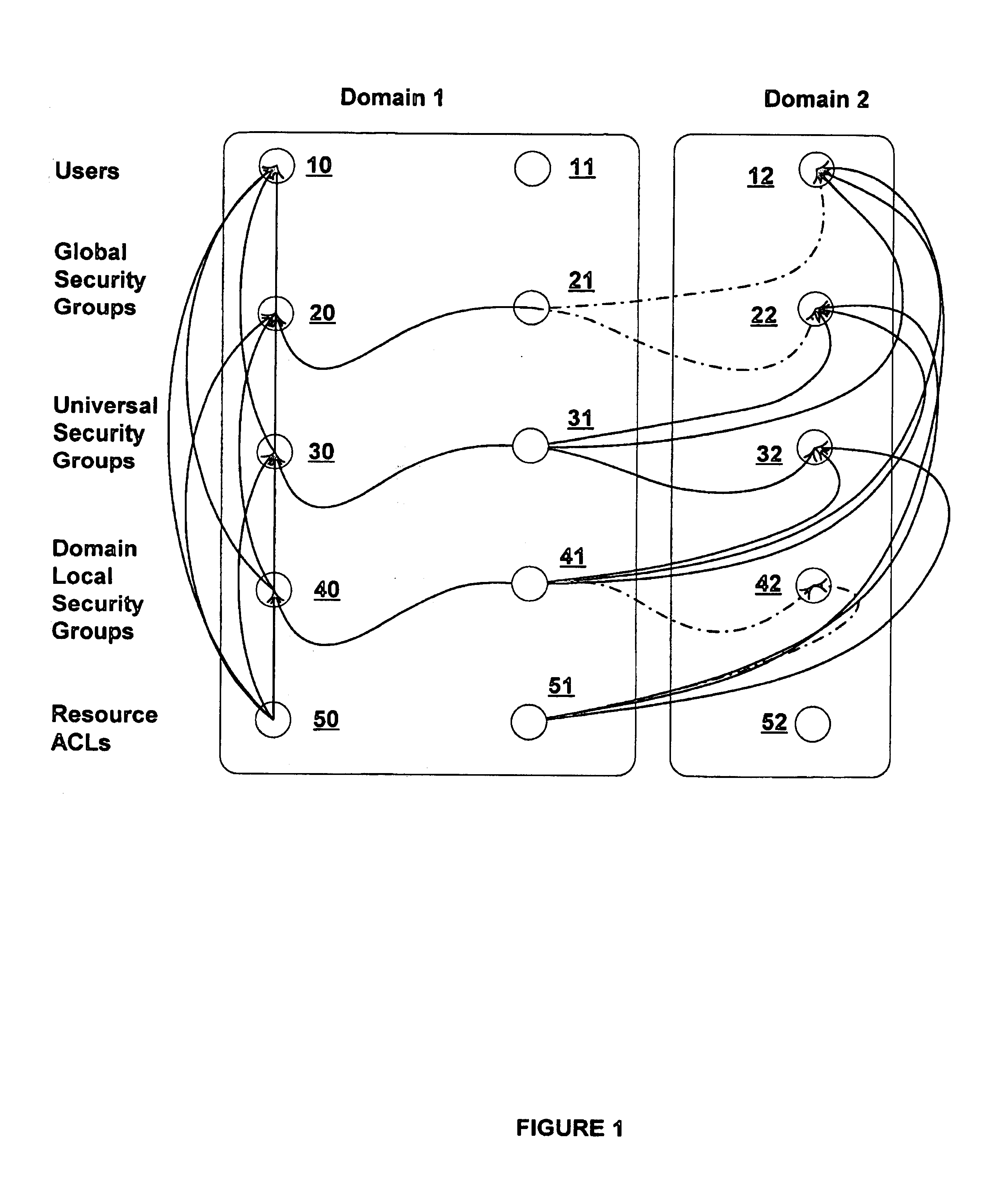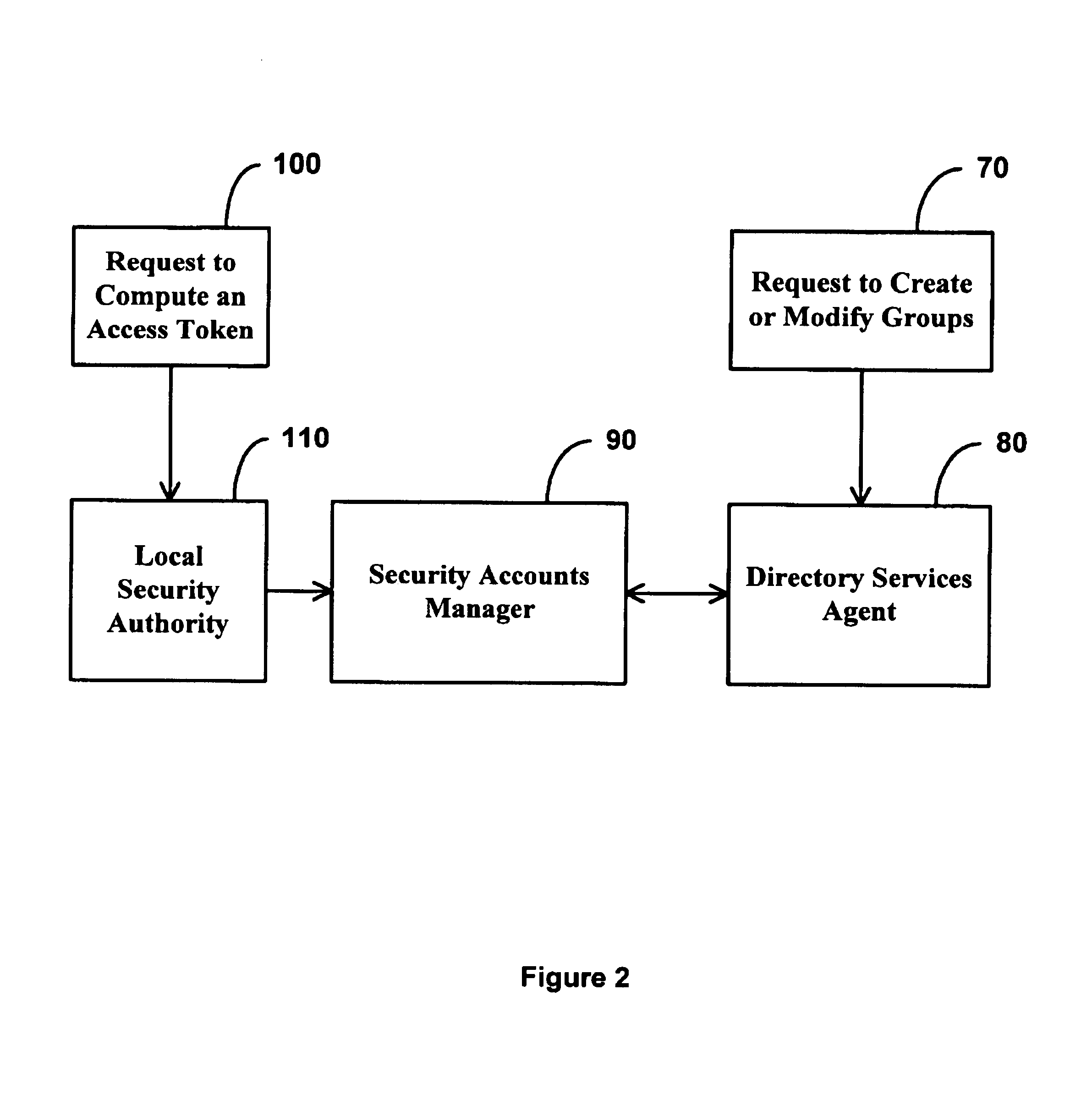Group types for administration of networks
a network and group technology, applied in the field of network administration, can solve the problems of not being able to provide access to domain accounts, not being able to contain other local groups, etc., and achieve the effects of reducing overhead, facilitating network administration, and facilitating network traffi
- Summary
- Abstract
- Description
- Claims
- Application Information
AI Technical Summary
Benefits of technology
Problems solved by technology
Method used
Image
Examples
Embodiment Construction
[0022]The invention teaches an efficient method of structuring groups of objects for security purposes in a distributed computing system, and a method of unifying such groups with groups used for distributing email.
[0023]The invention addresses two problems encountered presently. First, in a distributed system it is advantageous to perform access control at the granularity of sets of users rather than user-by-user. This leads to the concept of a security group. Groups gain power and flexibility by allowing nesting, e.g. group A being a member of group B implies that all members of group A are effectively members of group B. However, in a distributed system it is impractical to allow arbitrary nesting of groups, because doing so makes answering the question “does this user belong to this group?” which is a basic question that must be answered to perform access control to files and other network resources, quite expensive. In accordance with the invention, a set of rules for restricte...
PUM
 Login to View More
Login to View More Abstract
Description
Claims
Application Information
 Login to View More
Login to View More - R&D
- Intellectual Property
- Life Sciences
- Materials
- Tech Scout
- Unparalleled Data Quality
- Higher Quality Content
- 60% Fewer Hallucinations
Browse by: Latest US Patents, China's latest patents, Technical Efficacy Thesaurus, Application Domain, Technology Topic, Popular Technical Reports.
© 2025 PatSnap. All rights reserved.Legal|Privacy policy|Modern Slavery Act Transparency Statement|Sitemap|About US| Contact US: help@patsnap.com



